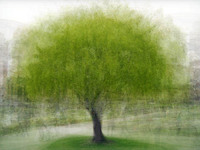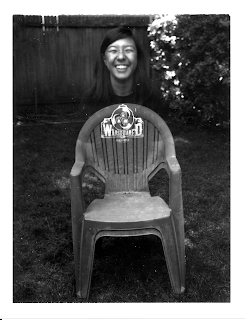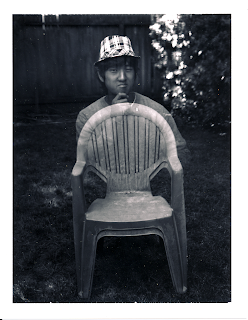
Wednesday, September 29, 2010
READING: Q & A with Robert Caplin
In this article, the NYT interviews travel photographer Robert Caplin. He talks about how to make your photos look more professional on a budget. On another note, he has some interesting ideas for iPhone cameras. He explained that the phone camera can be tricked into thinking that the light is darker than it is, which raising the camera to a source of light and then quickly taking the photo you want can compensate for. Here is one of his iPhone camera photos taken in Manhattan:


Tuesday, September 28, 2010
EXAMPLE: Fire Breathing and Shakespeare

I saw this really cool pic up on http://www.deviantart.com/ by one of my favorite photographers. It's kind of amusing because this photographer usually does high fashion, model type stuff. It's fun to see something exciting and kind of dangerous like breathing fire combined with his usual dainty model.
Currently, I'm in the process of editing some of the images from my Ashland trip. I didn't get that many because they were super prissy about copyrights (You can't even have pix of the outside of the theater because apparently that's copyrighted too). But I got some of my friends and a bit of the workshop and actor discussion. I'll post them up here when they're done.
EXAMPLE: Multiple Exposure
I love the way some photographers are using cameras and computers to combine multiple exposures into a single image. For example, Pep Vendosa, a local photographer shows examples in his garden and carousel series.

Of course this isn't completely new, cubist painters like Picasso, Gris and Braque were interested in the same ideas around the early 1900s.

Of course this isn't completely new, cubist painters like Picasso, Gris and Braque were interested in the same ideas around the early 1900s.
PROJECT 1: Alternative Process
So far I have been working with and experimenting with other ways to manipulate my photos. I worked with toning, in which I altered the color of the photograph by dying it in several different liquids. The first print was dipped into a tray filled with dark coffee, other were dipped into a tray of earl gray tea, black tea, and jasmine blossom green tea. The last print was dipped into a tray of red food coloring, resulting in a very pink photograph. I really enjoyed doing this project because I was testing new grounds and didn't know what the outcome would be. With the other three I really enjoyed the results because it gave the pictures an olden or aged look.


Monday, September 27, 2010
PROJECT 1: Large Format - Partial Exposures
Last week, I continued to work with the large format view camera, turning my attention to portraiture and partial exposures of film with the assistance and advice of Mr. Zivkov.
The technique we used to create the partial exposures was to take a photo of the subject while covering the bottom half of the lens with a piece of black mat card, then to remove the subject (in this case, people) and to take a photo of the same scene while covering the top half of the lens, thereby making two mini photos on a single sheet of film.
Below are the results.




The technique we used to create the partial exposures was to take a photo of the subject while covering the bottom half of the lens with a piece of black mat card, then to remove the subject (in this case, people) and to take a photo of the same scene while covering the top half of the lens, thereby making two mini photos on a single sheet of film.
Below are the results.




PROJECT 1: Rankin vs. Platon


This rotation I have been researching two modern and emerging photographers, Rankin and Platon. Both are very well noted for their work in portraiture, especially of celebrities and world leaders.
Recently Rankin has been working on several advertisements, most notably for the world cup. Including the Africa against AIDS foundation, and Nike. His eye for poses and backgrounds are really catch the eye and never fail to amaze.
Platon has photographed everything from ordinary people, to world leaders in Russia, to Bono. His use of close up photos of wide angle lenses are truly unique and prove to be very interesting shots. Platon is most renown for his many photographs of world leaders on the cover of multiple TIME magazine.
Friday, September 24, 2010
PROJECT 1: Digital (RAW)

For this project I decided to photograph portraits in (RAW) format. I think that portraits are a good way to show people at their best, and I tried to bring that out in my photos. Overall, I think that people believe that portraits are easy to shoot because you're just taking a picture of someone's face. But it is a lot harder than that, you need good lighting, the person needs to feel comfortable, and you need to position the person in the portrait where they are the main focus of the picture. I tried to use all of these points to make my photos concentrate on the people in them. I found a Group of homeless guys, who were happy with what they had, and were just hanging out. They were more than happy for me to take their picture. This specific guy (Jack) by far had the most character with his beard, and the wrinkles and cuts on his face. Overall i wanted to do something abnormal to break the barrier of portraits.
Monday, September 20, 2010
READING: An Insomniac Photographer
This is an article I found a while ago about a woman who photographs NYC at night. The photographs are stunning and her explanations are thoughtful and interesting. I particularly love the Pepsi-Cola photo.


Sunday, September 19, 2010
EXAMPLE: Timelapse Video and Slow Shutter
Timelapse Montage from Mike Flores on Vimeo.
Check out the above link. I thought it was pretty epic and amazing. Kind of makes me want to do some more light painting, or long exposure stuff in general. Maybe try out moth trails?
Subscribe to:
Posts (Atom)





